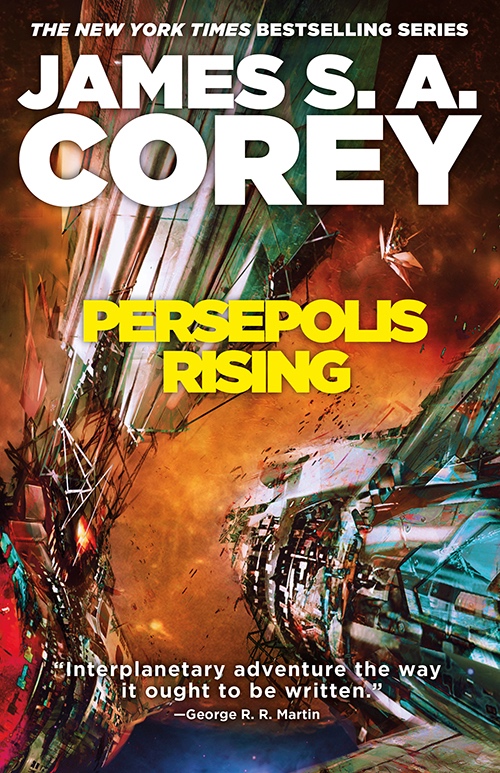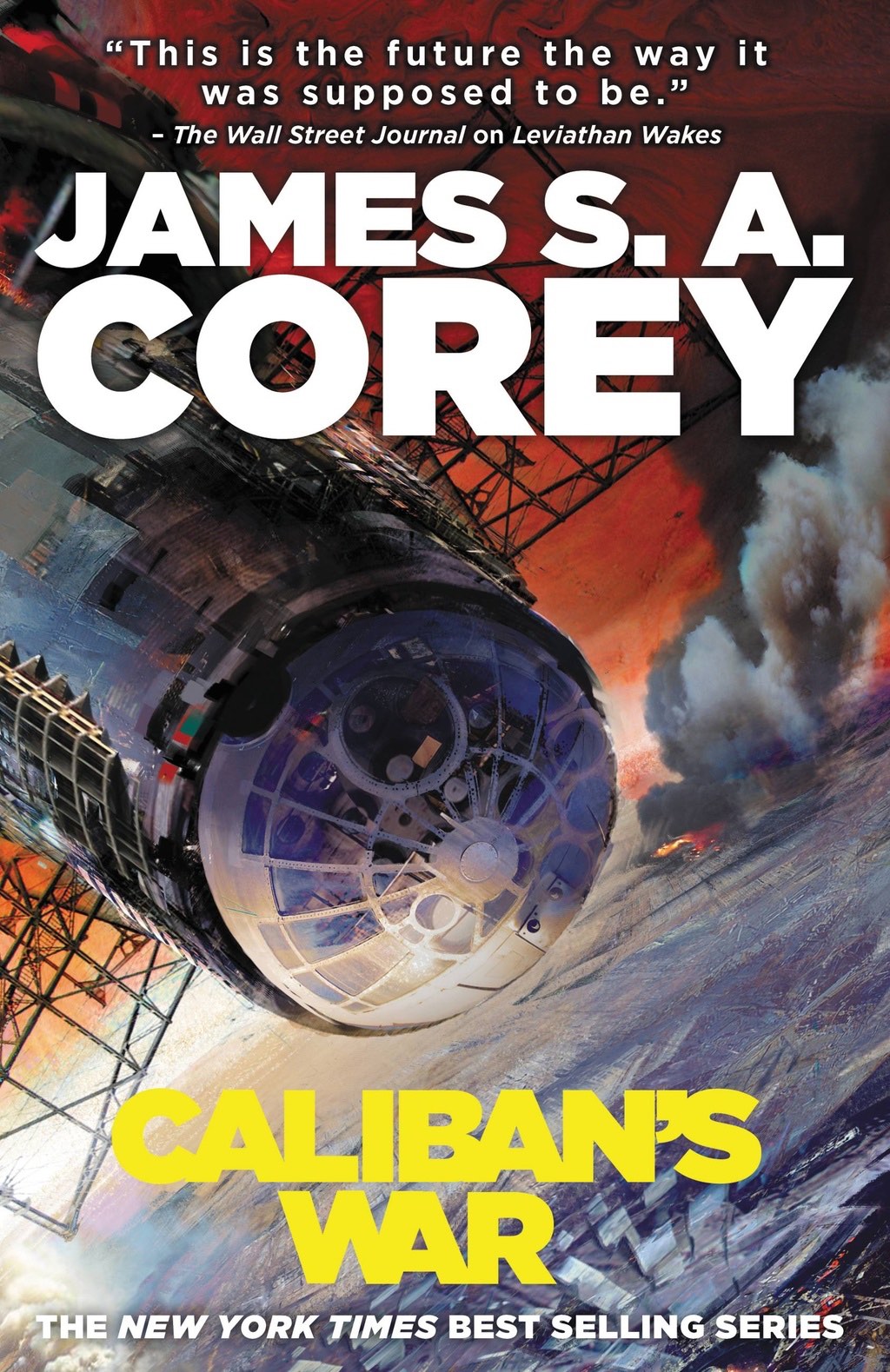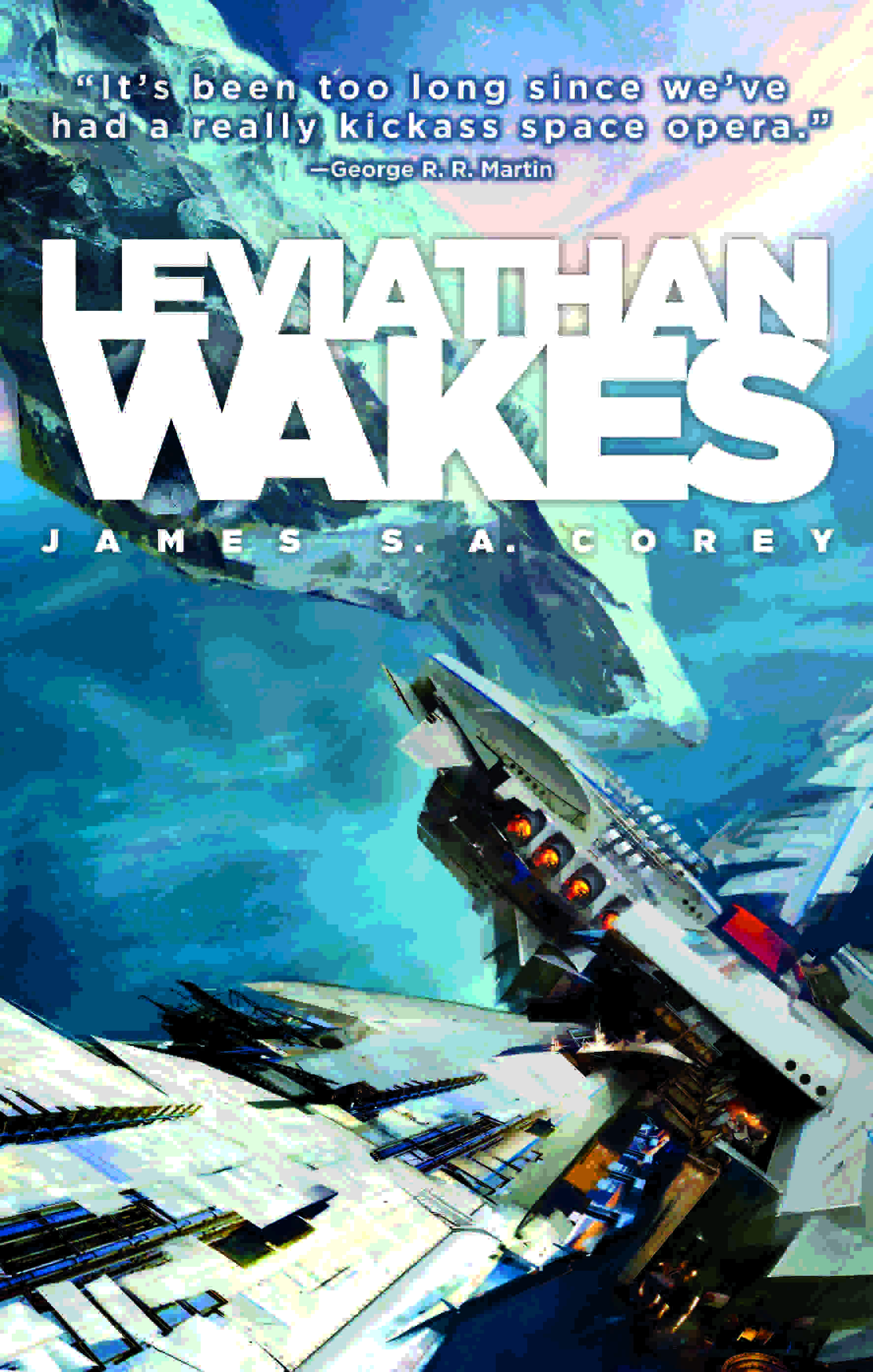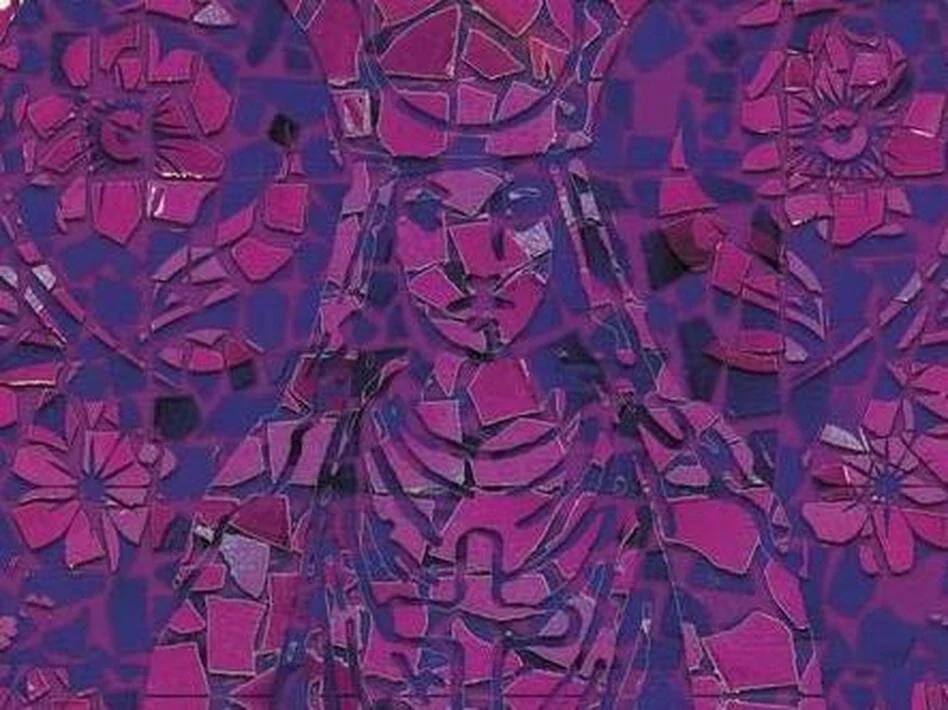The Expanse, a space opera set 200 years in our solar system’s future, frightens and thrills us with a plot as old as human literature: an unstoppable inhuman monster threatens to kill everyone but is resisted by imperfect heroes. And just when our heroes think they have things under control… (Beowulf, anyone? Game of Thrones?)
The Expanse was first a book series written by the team of Daniel Abraham and Ty Franck under the pen name James S. A. Corey. In 2012, the first novel, Leviathan Wakes, was nominated for the Hugo and Locus Awards for best novel. The third book, Abaddon's Gate, won a Locus Award. There are now six novels (and several short stories and novellas) set in Corey’s future solar system.
Most SF/F-loving critics have reviewed the TV series favorably. Sonia Saraiya of Salon dubbed The Expanse “Battlestar Galactica meets Game of Thrones” and NPR’s Adam Frank called season one “the best and most important piece of science fiction to appear on the small screen in a decade.” He confesses he was worried the show would “suck” in comparison to the books and would “destroy this thing of beauty (he) loved so dearly.”
Leviathan Wakes follows two male protagonists who are initially strangers. James Holden is a dishonorably-discharged Earther making a living as an officer on an ice barge. While answering a distress call from a remote asteroid, he finds an abandoned vessel coated with a mysterious substance; but he and his small crew are left with their small shuttle when unknown, high-powered warships appear and blow their mothership to bits. Joe Miller, the other protagonist, is a police detective living in the asteroid belt on Ceres (a “Belter”), who gets a missing person’s case because his boss thinks he won’t solve it. While tracking the rebellious runaway rich girl, Julie Mao, Miller learns that local gang territories have inexplicably reshuffled, and that Julie, although an Earther, was actively supporting the Belters' violent independence movement, the Outer Planets Alliance (OPA). The distressed vessel which Holden and his crew investigated proves to have been Julie’s last transport. The two protagonists meet on Eros Station during a gun battle and discover Julie dead, killed by terrifying alien slime crystals. Miller and Holden deduce that the protomolecule is deadly, but also that an evil, ruthless corporation is infecting an entire satellite of Belters with it as a test. At first they assume it is a bioweapon.
Season One of The Expanse TV show adds a third protagonist, the brilliant strategist and politically powerful Earther grandmother, Chrisjen Avasarala, who first appears in Book Two of the written series, Caliban’s War. She is an Assistant Undersecretary at the UN, which rules a unified Earth in this imagined future solar system. In contrast to Miller and Holden, she is happily married and enjoying her grandchildren whenever she can. Her initial goal? To prevent a war between Mars and Earth from starting by mistake or because of Holden’s ill-thought-out system-wide transmissions. Later, like the other heroes, she tries to prevent the spread of the alien protomolecule.
The Surefire Combination of Speculative Fiction Elements That Make The Expanse Thrilling and Convincing
1. Excellent worldbuilding. Corey crafts a complex, detailed future in which mankind has begun settling a solar system with recognizable and believable features we can relate to. In this not-too-distant future, advances in propulsion mean reaching other planets takes less time, yet no one thinks that light speed is achievable soon, a physics problem often ignored by other writers. Settlers have emigrated off Earth to asteroids, space stations, planets and moons, yet goods from Earth are essential to their survival, no matter how much they may wish to be independent. Scientists have not yet conquered problems of agriculture in dim sunlight, or low gravity effects on humans born off the Earth. The UN rules a unified Earth, and Mars is a tightly organized, highly structured society. The asteroid belt is populated by sickly, downtrodden workers who resent Earthers and Martians. Corey even includes the Mormons trying to build a multi-generational ark to carry them away to another star system, never to return.
2. High stakes. A crazy-scary, super-overwhelming, inhuman force is our adversary, and humans don't seem to stand a chance against this borderline-horror element. Into Corey's world of class conflict, corporate greed and political brinksmanship comes a two billion-year-old alien seed which can incorporate humans and their ships into pulsing, juicy yet crystalline, nearly-sentient parts of itself, reminiscent of the Borg collectives of Star Trek. Even more frighteningly, after the alien thing takes over the Eros Station (“assimilates” it), the entity moves the station faster than humanity’s then-current fastest warships, a warning that the civilization which sent the protomolecule must have been orders of magnitude more technologically advanced, even two billion years earlier. In speculative fiction, terrifying enemies make for page-turners and late night reading. Consider the blue and frozen, undead humans in Game of Thrones, entities almost impossible to kill, which can turn you into one of them if they touch you. Whether this entity can be stopped once it achieves critical mass is left open at the end of the first season, and after the first two of Corey's books. Even before it achieves full consciousness, its defense mechanisms allow it to move in ways that seem to defy physics. What might it do once it achieves consciousness?
3. Fully-realized characterization, including secondary characters. The characterization in both the novels and TV series is rich. Sympathetic and three-dimensional human characters struggle with their own insecurities and histories, desires and weaknesses, but they can act heroically when confronted by a terrifying new enemy capable of wiping out our entire species. Holden is an idealistic, loyal and naive young officer while Miller is a jaded, cynical, burned-out cop. Both pine for women they don’t have: exes, or the dead girl Miller never met, or an officer under Holden’s command, Naomi, who should be off limits, but who (of course) has been waiting years to fall into bed with him when he finally takes interest in her. The two protagonists have not been living up to their potential as the story begins. They will be tested.
Miller and Holden have blotched service records but serve as ethical foils for one another. They make good partners in that each is strong where the other is weak. As Naomi tells Holden:
"You might be the best person I know. But you’re totally uncompromising on what you think is right, and that’s what you hate about Miller.”
“I do?”
“Yes,” she said. “He’s totally uncompromising too, but he has different ideas on how things work. You hate that.
And yet Miller, who acts like a tough guy and is a perennial loner, weeps with emotion after he realizes that Holden considers him part of the Rocinante’s tight-knit crew and assumes Miller will return after completing a separate mission. In the end, Miller makes the most interesting, and toughest, choice of them all.
In the imagined world of The Expanse, humans in groups act believably. Once the protomolecule is discovered, greedy corporations, easily recognizable to us, are unable to resist testing it out. First come lab tests, but shortly the molecule’s effect on a whole satellite must be known, no matter how many are killed. As during the Black Plague, frightened people will flee the infection and carry death with them to other ships and colonies. Downtrodden rebels resist discrimination and fight against oppressive big planets with big populations. Soldiers advocate war to solve problems. Men and women love, parents protect their children, and people still believe in familiar religions and follow demagogues. In short, good fiction offers us characters and societies with which we can relate.
4. Interesting sub-conflicts abound. Racism, sexism and “planetism” thrive in Corey’s worlds, as do gangs, labor unions and platoon loyalty. Struggling humans are too caught up in their turf battles to come together to fight the real danger, the alien entity. On an individual level, UN bureaucrats struggle to move up, and their admirals are caught in unproductive rivalries. Chrisjen can pull off her scheme by adopting the guise of an aging grandmotherly bureaucrat approaching retirement whom the power-hungry underestimate. Larger scale conflicts include Mars in a simmering Cold War with Earth, and Belters who are discriminated against by Martians and Earthers as an inferior race. Belters resent their dependence upon the planets for air, water and food, and are determined to develop their own supplies. Before the story begins, Julie Mao overcame Belters’ hatred of Earthers and, as a member of the OPA, sought justice for the Belt, which is part of her appeal to Miller.
5. Good writing generally. The novels and show are stylistically interesting in that each protagonist’s story proceeds like works from different genres, all of which lend themselves well to the screen. Miller’s story reads like a noir detective mystery: a jaded slacker of a cop on the take is set up to fail looking for a missing girl who turns out to be at the heart of the worst calamity ever to befall the solar system. Holden’s challenges are classic adventure space opera scifi: his innocent commercial freighter is blown to bits by mysterious high-tech ships, and powerful factions with unknown motivations are soon chasing him and his crew across the system, guns blazing. Holden reacts with naive broadcasts which nearly send Earth to war with Mars, and the Belters to war with both. Meanwhile, Chrisjen is a foul-mouthed grandmother power broker embroiled in tense political machinations, bribery, spying and cover-ups by ruthless corporations and corrupt UN politicians, much like an Earth-bound spy thriller, only one set in the near future. The Expanse is fast-paced, packed with snappy dialogue and smart imagery, plus many other elements that make any writing good.
Read the books or Watch the TV Series?
If you have the time, enjoy both the books and the TV series, but for different reasons. The TV series explodes with fast-pacing and thrilling horror and special effects, like coffee pouring sideways as a result of the Coriolis Effect as a small space station spins. Within the first few minutes of Episode One, Season One, viewers are shocked and horrified by alien blue crystal slime crusting, glowing and pulsing as Julie discovers it in her abandoned ship. Seeing bits of it glowing and floating like spores of some malevolent fairies, poking jaggedly crystalline out of dead people’s mouths, is highly effective on the screen.
As written, however, this opening scene lacks the same shock value, although Corey could have increased the impact by incorporating more senses in the description, using more visual detail, as well as sounds and smells:
The engineering deck was huge, vaulted like a cathedral. The fusion reactor dominated the central space. Something was wrong with it. Where she expected to see readouts, shielding and monitors, a layer of something like mud seemed to flow over the reactor core. Slowly, Julie floated toward it, one hand still on the ladder. The strange smell became overpowering.
The mud caked around the reactor had structure to it like nothing she’d seen before. Tubes ran through it like veins or airways. Parts of it pulsed. Not mud, then.
Flesh.
An outcropping of the thing shifted toward her. Compared to the whole, it seemed no larger than a toe, a little finger. It was Captain Darren’s head.
“Help me,” it said.
In my opinion, the noveles and TV series both do a good job with characterization. The history and motivations of Holden, Miller and Chrisjen are clear, and so their reactions to events are plausible in both. Also, both media develop well the grievances that the Belters hold against the citizens of the two big planets, and the dangerous threat of the alien protomolecule.
While both are fast-paced, I found that the novels more successfully eased me into the complicated storylines and Corey’s deeply complex, near-future setting with all its history, competing interest groups and far-flung settlements. Fans of SF expect, even like, to be thrown into imagined worlds not knowing all the rules, science or politics. We are patient as pertinent information is revealed as needed to help us understand the writer’s creation.
The first book, Leviathan Wakes, is easier to follow than Season One of the TV show because with only two protagonists, Holden and Miller, there is more time relationships to mature, like the intimate relationship between crewmember Naomi and Holden. This relationship feels rushed in the TV series where they pair suddenly. On the other hand, Season One’s third perspective, that of the politically powerful Chrisjen, reveals much about Corey's solar system. Through her we more quickly understand gender relations in the 23rd Century and why Earth reacts slowly to the entity threat. In Chrisjen’s world, ruthless UN admirals seek power and try to destroy their enemies, while important corporate bazillionaires keep high government officials and admirals in their pockets, and so believe they are immune to prosecution by governments, even if their experiments kill hundreds of thousands on remote satellites.
In retrospect, the reverse might have worked better. Readers of Leviathan Wakes could have used Christjen’s perspective to explain UN Earth policymakers’ seemingly lethargic and illogical responses, but the third point of view in Season One of the Syfy show makes grasping the incredibly complex future solar system even more challenging. Most reviewers report needing 3 - 4 episodes of the show to get their bearings, while the books weigh in at 500 - 600 pages each. This is a lot to ask of most viewers and readers, but if you like military/noir mystery/political intrigue/adventure space opera, this series has it all, and more.
Where to Read it and Watch it
James S. A. Corey’s best selling novels are widely available and in libraries, in print and audio formats. The Syfy Channel produced the TV series, and Season Two began running at the beginning of February on Wednesday nights. You can also binge-watch all of Season One free with an Amazon Prime subscription, while new episodes of Season Two are available on Amazon for purchase.
Read Similar Stories





















Cadwell Turnbull's new novel — the first in a trilogy — imagines the hard, uncertain work of a fantastical justice.